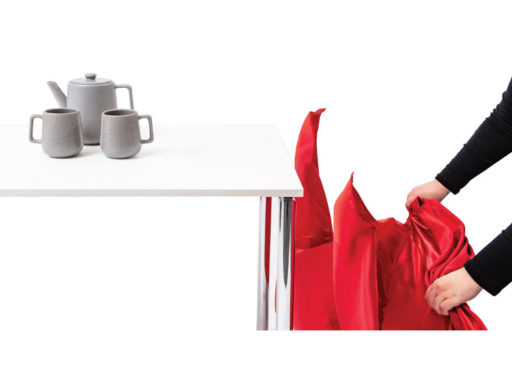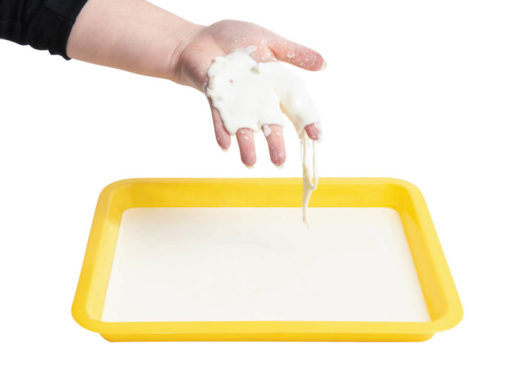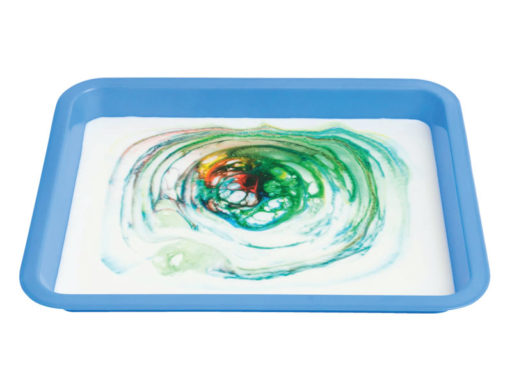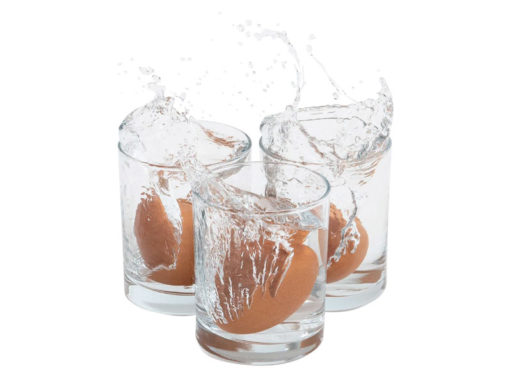Gravity is the force that pulls things down, so if you were to tip a glass of water upside down, you would expect the water to fall right out of the glass. This activity will show how, with a simple piece of card, you can stop that from happening.
Printable downloads
Follow these steps…
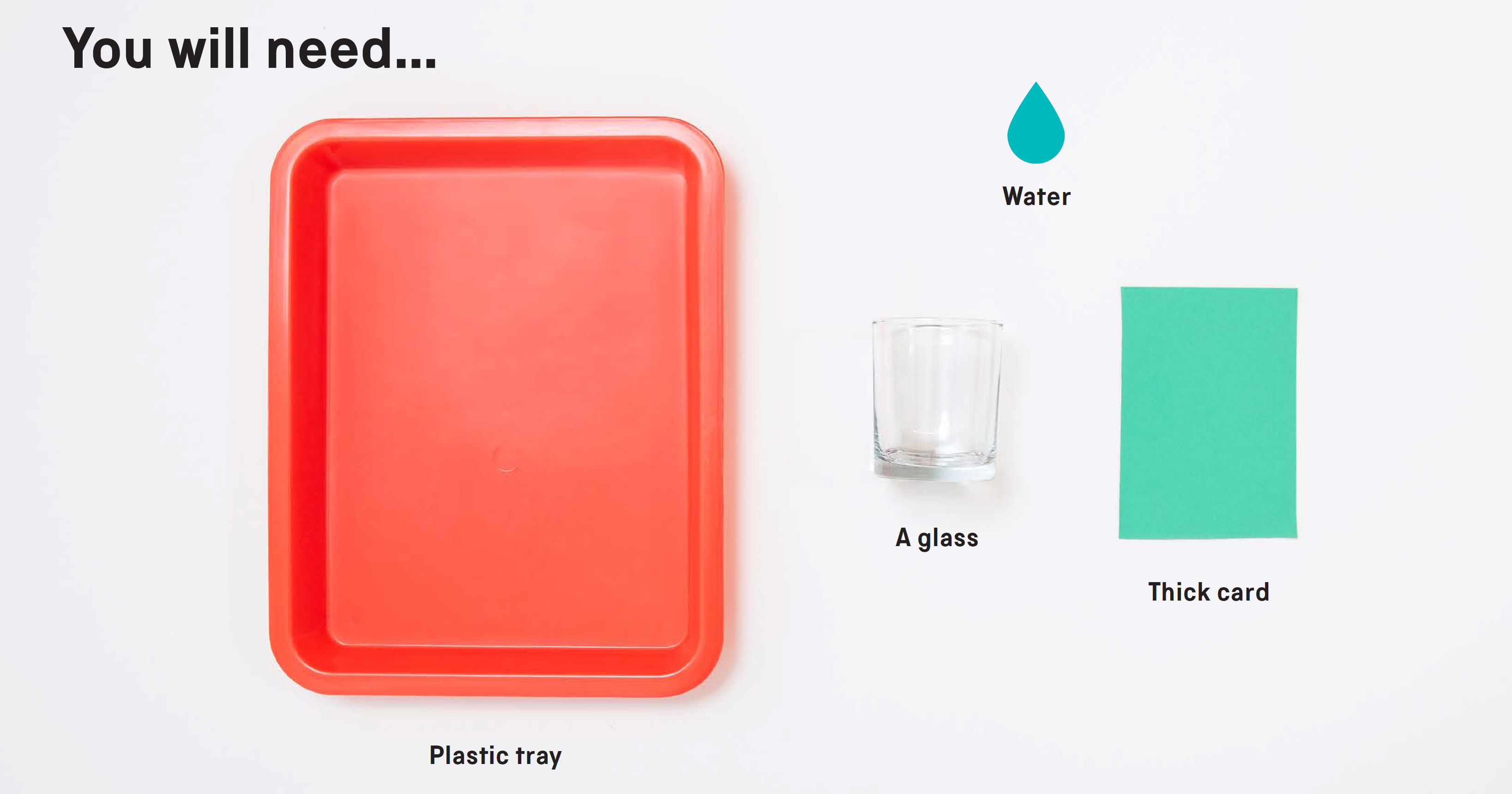
-
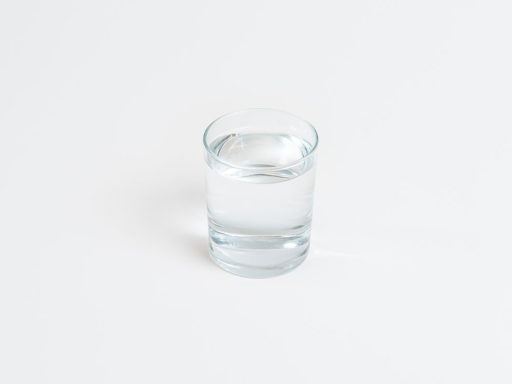 Fill the glass with water.
Fill the glass with water. -
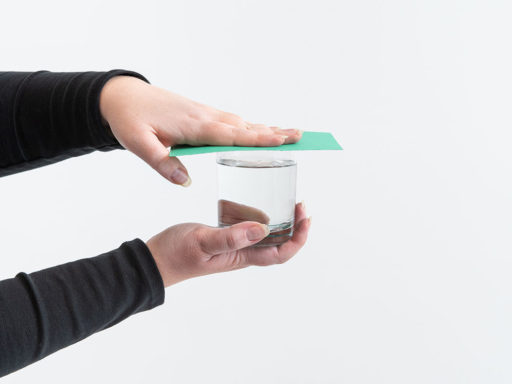 Place the card on top.
Place the card on top. -
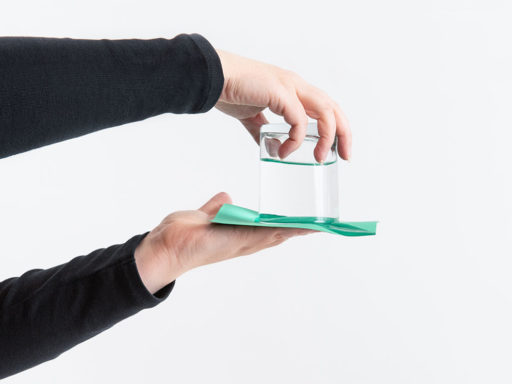 Turn the glass over, while holding onto the card and making sure the card always stays flat. Do this over the plastic tray.
Turn the glass over, while holding onto the card and making sure the card always stays flat. Do this over the plastic tray. -
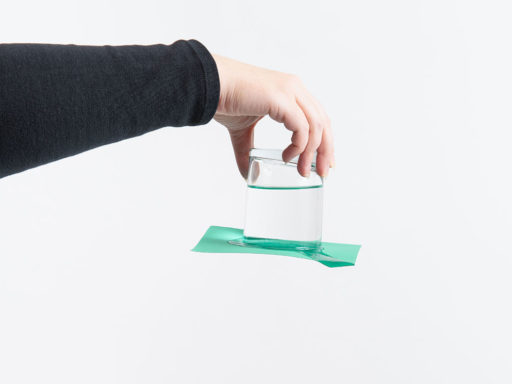 When the glass is upside down let go of the card… and it should stay where it is!
When the glass is upside down let go of the card… and it should stay where it is!
Think and talk about…
- What is stopping the water from coming out?
- Will the seal hold for ever?
Investigate…
- What happens if you tip the glass? Does the seal still hold?
- Does it work better with more or less water?
- What happens if you use a plastic cup with a hole in the bottom? (Cover the hole with a finger while you fill the cup.)
Did you know?
Air pressure is greatest at sea level and gets lower the higher up into the atmosphere you go. This change in pressure is why your ears can sometimes pop when you go up in an aeroplane.
What’s the science?
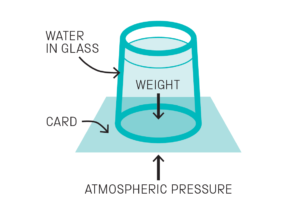 The weight of the water inside the glass presses down on the card, but there is another force pressing upwards on the card from outside: atmospheric pressure. The atmosphere is more than 100 kilometres thick, and the weight of all that air above means that, at ground level, the air pushes on everything, in all directions.
The weight of the water inside the glass presses down on the card, but there is another force pressing upwards on the card from outside: atmospheric pressure. The atmosphere is more than 100 kilometres thick, and the weight of all that air above means that, at ground level, the air pushes on everything, in all directions.
The atmospheric pressure on the underside of the card is strong enough to counteract the pressure of the water pushing downwards – until the card becomes sodden and soft, and the water begins to leak out around the rim of the glass.
Science in your world
 Atmospheric pressure varies, and that variation affects the weather. High pressure normally brings settled weather, but things become unsettled and stormy when the pressure drops. A barometer is a device that measures atmospheric pressure and can therefore help in predicting how the weather will change.
Atmospheric pressure varies, and that variation affects the weather. High pressure normally brings settled weather, but things become unsettled and stormy when the pressure drops. A barometer is a device that measures atmospheric pressure and can therefore help in predicting how the weather will change.
